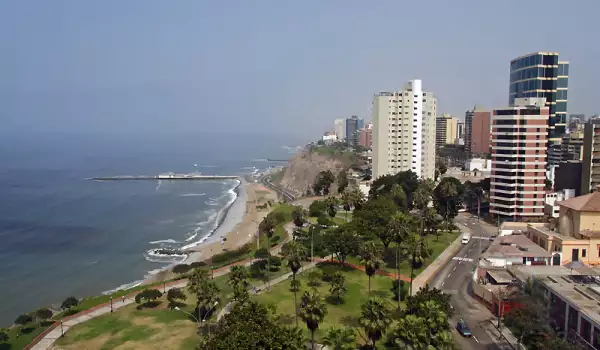Lima

Lima is an interesting and colorful Latin American city. This is the capital of the western South American country of Peru. Lima is located near the coast of the Pacific Ocean and lies in the valleys of the rivers Chilon, Rimak and Lurin. The capital Lima is located in the desert behind the mainland coast of the Gulf of the same name. To the waters of the ocean lies the sea port of Callao. Lima is the fifth largest site in Latin America after Sao Paulo, Mexico City, Buenos Aires and Rio de Janeiro.
The population of Lima is almost seven million people and the entire metropolitan population reaches more than 8 2000000. With this number of people living in Lima, the capital of Peru is among the largest and most densely populated urban areas in Latin America. Residents of Lima are of quite a diverse racial and ethnic origin. Traditionally, most are mestizo, which are a mix of Europeans and Indians, but the political and economic instability in the second half of the 20th century led to an influx of a significant number of pure Indian immigrants from neighboring provinces.
The history of Lima began in 1535 when the city was founded by Spanish conquistador Francisco Pizarro. The original settlement was considered, The City of Kings, as translated from its then name - La ciudad de los Reyes.

Lima became the most important city in the Spanish area of Peru, which was then the Administrative Region which included most of the Spanish colonies in South America. For more than three centuries Lima was the largest metropolis on the continent. Today almost one third of the population of Peru live in this city. The National University of Lima, San Marcos was founded back in 1551 which still operates today and is the oldest university in both South and North America.
The tour of the historic and cultural attractions in Lima must include the historical center of Lima. There, is the Plaza Mayor square with the Cathedral of San Francisco from the 16th century and the presidential palace. Particularly interesting is the park of olives. Among the religious monuments that should be visited in Lima is the Monastery of San Francisco with its interesting catacombs. The temple is an excellent example of colonial architecture.
In Lima there is also the Gold Museum and the archaeological museum in Rafael Herrera, where you can learn everything about the turbulent history of Lima and that of Latin America. Both museums are located in the neighborhood of Puebla.
The Historic Center of Lima has been declared by UNESCO as a World Heritage due to the incredible architectural and historical monuments, which represent most of the buildings there. They have an amazing mix of architectural styles - Spanish colonial style, Art Nouveau, French architectural trends and more. In this part of Lima there is still the preserved medieval old town of retaining walls which are an excellent example of medieval Spanish firewalls.










